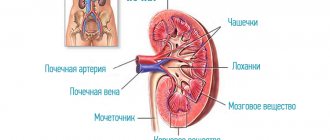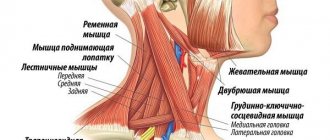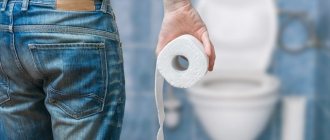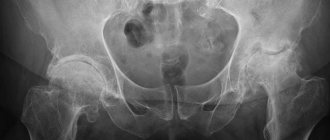Gymnastics for women using the Kegel method in its modern version has been known only since the 20th century, but long before that, representatives of the fairer sex trained the pelvic floor muscles with the help of exercises and various devices. One of the specific simulators used in ancient times was a stone egg with a strong thread. It was placed in the vagina, after which the muscles had to be held or pushed out and moved this round stone inside. Sometimes a weight was suspended from a strong thread to increase the effectiveness of the exercises.
We have heard mentions that women trained muscles in the small pelvis in Ancient Egypt, China, India and other countries. For the most part, hetaeras, priestesses and geishas paid attention to such gymnastics. The technique was hidden, used secretly, so only scanty data has survived to this day on how exactly the exercises were carried out.
Already in the 20th century, ancient traditions were resumed and became widely known as Kegel gymnastics for urinary incontinence in women. Doctors recommended resorting to this technique as an additional measure in the treatment of incontinence that occurs during exercise, coughing, sneezing and other situations when intra-abdominal pressure increases. Systematic implementation of medical recommendations helped strengthen the pelvic floor muscles, thereby eliminating involuntary urine leakage.
The first mention of the benefits of therapeutic exercises belongs to the US doctor Joshua Davis (1932), but the technique became most famous in 1948 thanks to the American scientist Arnold Kegel, who introduced the exercise machine and gave his name to gymnastics. Since then, the Kegel complex for women and men at home has gained mass popularity, and it is still relevant today.
The benefits of Kegel exercises for incontinence
The muscle fibers of the pelvic floor form a kind of hammock at the base of the pelvis. Their task is to fix and strengthen bone tissue, hold the bladder, urethra, intestines, uterus and maintain their functionality. The weakening of these muscles is associated with various reasons. This could be overweight, genetics, persistent constipation, menopause, excessive exercise and much more.
Whatever the reason for weak muscles, Kegels for women are specially designed to strengthen them. The only condition is regularity and correct execution. You need to do the exercises until the pelvic muscles learn to reflexively contract in response to increased intra-abdominal pressure. This reflex will prevent involuntary leakage of urine.
So, it is advisable to do Kegel exercises for urinary incontinence in women if:
- urine is released when coughing or sneezing, laughing and physical activity, as well as during intimate relationships;
- when playing sports you have to wear urological pads;
- muscles weakened after pregnancy and childbirth;
- I am unable to hold urine when there is an urgent urge.
In these situations, Kegel exercises will help strengthen the muscles of the genitourinary organs, and the problem will be solved quickly and effectively.
Making classes more difficult
Properly selected balls are held by the vagina with some effort. Therefore, inexperienced women are recommended to start their training with lightweight models. Regular training of 15 minutes over time can be increased to eight hours of holding the balls. Constant and correct execution of exercises allows you to better feel the internal muscles and control them. After the first few lessons at home, you can begin to gradually complicate the lessons:
- Try to contract the vaginal muscles, trying to push the exercise machine up, then gradually lower it down. It is easy to control the correct technique thanks to the moving loop.
- Perform intermittent ejections with a short time interval.
- Place one exercise ball inside the vagina and leave the second outside. Try to pull the last one in and then forcefully push it out.
The number of repetitions of each exercise is 10 times. You need to start training daily or at least 3 times a week. Women with well-developed vaginal muscles can easily rotate the balls, change their positions, or even shoot them. This level of professionalism can only be achieved through intensive training.
Kegel exercises for pregnant and postpartum women
Pregnancy and childbirth are a difficult process for the body, during which the condition of the muscles in the pelvis plays a big role. Weak tone of other muscles of the body, although it can cause discomfort, is not so dangerous. Weakened pelvic muscles are fraught with painful, protracted labor, as well as decreased libido, prolapse and prolapse of the uterus, and urinary incontinence. Often women experience urine leakage, both during pregnancy (the fetus puts pressure on the bladder) and after childbirth. The second option awaits those who have poor muscle function. Therefore, doctors recommend training them in advance, monitoring their condition during pregnancy and maintaining muscle tone after childbirth.
While carrying a child, thanks to Kegel exercises for urinary incontinence, a woman's tissue elasticity increases, venous congestion decreases, joint mobility improves, intestinal function improves, and the risk of involuntary urine loss decreases. Kegel exercises to strengthen muscles are also important for the process of childbirth itself, since their condition directly affects the maintenance of pregnancy and recovery in the postpartum period.
It is convenient that the training can be carried out at home - Kegel exercises for women do not require a special room and exercise machine and can be performed at any time. You need to exercise before and after childbirth, since muscle elasticity is always needed. Before the baby is born, this will help him to be born, and after that it will speed up the healing of ruptures and prevent organ prolapse. Even after a cesarean section, exercise is beneficial because muscle tone in pregnant women is reduced due to gravity.
Indications for performing intimate gymnastics
First of all, an unusual set of exercises will come in handy:
- pregnant women - to maintain muscle tone, which bear a considerable load during the 2nd and 3rd trimester, to make labor easier and prevent ruptures;
- for ladies over 50 years of age - for the prevention of age-related health problems, as well as as part of the treatment of existing diseases;
- for new mothers - to restore tissues that have undergone significant stretching and return intimate muscles to their prenatal state;
- for those who are faced with the problem of incontinence - to strengthen the corresponding muscles (note that initially Dr. Kegel’s gymnastics were conceived as a way of conservative treatment of incontinence, and only years later they began to be practiced for other purposes);
- for patients with uterine prolapse - to bring this organ to its normal position without surgery and prevent its prolapse;
- women who complain about the lack of orgasm, the reason for which may be not only psychological reasons or any diseases, but also the banal underdevelopment of the intimate muscles, since it is the elastic, elastic, narrow vagina that can not only give special pleasure to the young lady’s sexual partner, but also inflate her own chances of experiencing previously inaccessible sensations to new heights.
Kegel exercises help tidy up the most intimate and delicate area on a woman’s body.
Less commonly, Kegel exercises are recommended for women with diseases of the rectum or who have undergone surgery to remove the uterus. Gymnastics is also used to prevent various types of inflammation in the pelvic organs, counteract the aging process and preserve women’s health, regardless of age.
Additional benefits of intimate muscle training
In addition to the benefits of Kegel exercises for urinary incontinence in women, they are beneficial for the health of various systems and the body as a whole. In particular, we are talking about sexual health. If a representative of the fairer sex notices weakened tone of the vaginal muscles (or her partner notices this), wants to improve the quality of sensations received during intimacy, or increase libido, you need to start training immediately. Thanks to regular training, the tone of the pelvic muscles will increase and blood circulation in this area will improve (which is important for those whose activities involve being in a static position for a long time). A woman will be able to control her intimate muscles, which will expand the range of sexual sensations, give joy from intimate caresses and increase libido.
Kegel exercises will also bring significant benefits to those entering the menopause phase. During this period, sexual intercourse can cause discomfort and pain, and the external genitalia are not sufficiently moisturized. If we add to this the increased likelihood of ureteral infections, the picture is bleak. The sooner you start gymnastics, the faster you can eliminate problems. Thanks to regular training, blood circulation will improve, and with it the condition of the mucous membranes. The risk of skin damage during sexual intercourse will decrease, which means the likelihood of infection will decrease. At the same time, the muscular tissue of the genitourinary system will be strengthened, which will prevent incontinence.
Contraindications
Since Kegel exercises involve active muscle work and serious tension, they are contraindicated when identifying:
- various types of neoplasms;
- ovarian cysts;
- fibroids or uterine prolapse;
- sexually transmitted diseases;
- inflammatory processes and other ailments associated with the pelvic organs.
It is not advisable to start doing Kegel exercises during your period.
Women who have had a difficult birth or cesarean section must be given permission to exercise by their attending physician. Pregnant women will also have to visit a specialist: although in general gymnastics have a beneficial effect on the body of a potential mother, in some cases it can cause a miscarriage, so you should not start training without the permission of a specialist. However, even if you are completely healthy and do not expect a new addition to your family, a consultation with a gynecologist will not be superfluous .
But virginity is not a hindrance to Kegel exercises. The only thing is that young ladies who have not yet begun to be sexually active will have to do without introducing foreign objects into the vagina (finger, exercise balls, etc.) As for the youngest members of the family, in theory, gymnastics can be used to treat urinary incontinence in children, but in practice this rarely happens due to the difficulty of explaining the essence of the exercises to a child. In any case, the decision about whether the baby needs therapeutic exercises should be made by the doctor.
How to do the exercises correctly
To properly perform Kegel exercises for urinary incontinence in a woman, you first need to determine which muscles should be used. Detecting them is not difficult, and there are several simple ways to do this:
- While urinating, pause the stream, then relax and continue. Remember the muscle that had to be tensed when the process was stopped.
- Imagine that you need to keep gases inside the intestines when they try to come out. To do this, tense your muscles as much as possible and remember the feeling.
- Wash your hands, lie down on the sofa and insert a finger into the vaginal cavity, and then try to grasp it with your internal muscles. If you manage to tighten them so that your finger feels a gentle squeeze, this is what you need.
Any of the listed methods or a combination of them can be used for beginners to find the very muscles that need to be strengthened. In the future, a course of gymnastics consists of sequential contraction and relaxation of this muscle. Regularity and patience are important, and soon the result will be noticeable.
Kegel exercises can be done anywhere and at any time - at home, in transport, at your desk, in line. People around you will not guess that the woman is doing the exercises. It is advisable to take a comfortable position - standing, sitting or lying down, and then concentrate on specific muscles. Next, you need to sequentially compress and relax the muscles, while counting to three for each movement. It doesn't matter whether you're watching TV, driving, reading a book or taking a bath - exercise, and the more often the better. Doctors' recommendations boil down to the fact that it is advisable to perform the workout three times a day, each time in a new position, and increase the number of repetitions to 10–15. With this schedule, a significant effect will appear in 2-3 months.
You need to understand that for urinary incontinence in women, Kegel gymnastics is not the only method of treatment, but part of complex therapy. Execution technique and regularity are of great importance. It is advisable to consult a doctor.
Types of balls
There are several types of Kegel balls. They all differ in their shape, weight, size and material. They are firmly fastened together with a thread or fishing line, and there is a loop at the end. She stays outside during training. Balls are divided into 3 groups:
- Classic
. These are simple models without additional functions. - Vibrating
. Allows you to enhance muscle tone and sensitivity of erogenous zones. Also used for the prevention of gynecological diseases. - With a shifted center of gravity
. These are hollow models with a small heavy ball inside.
The shape of the vaginal simulator can be round or oval. The diameter of the circle varies from 1.5 to 4 cm, and the weight is 30-150 g. For beginners, experts recommend using light balls with a large diameter. The following materials can be used for manufacturing:
- hypoallergenic plastic;
- metal;
- silicone;
- stone (jade or jadeite).
Vaginal balls differ in surface structure and can be ribbed, smooth, embossed or velvety. For beginners, it is better to use embossed or ribbed options. It is quite difficult for untrained muscles to hold smooth utensils.
The right approach
Experts give the following recommendations on how to properly perform Kegel exercises for women:
- empty your bladder immediately before class;
- choose a comfortable position - sitting, lying or standing. If the preferred position is lying on your back, your arms should be extended along the body and your knees slightly raised. The neck should not be strained;
- The main movement in any Kegel exercise for women is compression (contraction). It is important to avoid tension in the abdominal muscles, buttocks and thighs, otherwise there will be no result;
- you need to breathe deeply, evenly and calmly, without delay;
- you cannot contract the intimate muscles when urinating - this method, on the contrary, weakens the pelvic floor muscles;
- repeat the complex 3-4 times during the day, performing 5 to 40 repetitions each time. You cannot sharply increase the load, only gradually: perform 15 repetitions for 2 weeks, 20 repetitions for the next 2 weeks, etc.
The correct technique for performing Kegel gymnastics for women allows you to feel the first positive results after just six weeks of regular exercise. Changes will be noticeable in all areas of life, including intimate ones, and self-confidence will even increase.
Preparation before charging
A Kegel exerciser is recommended for an empty bladder. Otherwise, pain and slight urination may occur during exercise.
You need to concentrate only on working the pelvic floor muscles. To increase concentration, pay attention to breathing. This helps you relax and get the best results. You need to do Kegel exercises in a comfortable position. This can be done standing, sitting, lying down. You can find a video on the Internet that demonstrates how to perform the exercises correctly.
Precautionary measures
Considering the specifics of its implementation, the Kegel complex for women has almost no contraindications. Exception:
- Recent miscarriage;
- Premature birth and major surgery;
- The presence of malignant neoplasms;
- Prolapse of the uterus.
In these cases, you should not overexert yourself. But in any case, you should always consult your doctor before starting classes. Even if there are no contraindications, but you feel discomfort or pain during exercise, you should stop and consult a doctor. You can resume training only with the permission of a doctor. A consultation with a gynecologist will be needed if after 3-5 months of regular training there is no change for the better. The rest of the exercises are flawless - there are no strength loads or cardio stress, no need to spend money on exercise machines, equipment, or a trip to the gym. The minimum investment of effort and time will pay off with improved well-being in all areas.
Basic elements of gymnastics
A wide selection of Kegel exercises for women allows you to actively work out the pelvic muscles and those located next to them. A set of 10 most effective:
Exercise "Compression"
Take a comfortable position. Contract your intimate muscles, hold for 10 seconds, relax. Repeat 10–12 times, eventually increasing the number to 50.
Exercise “Contraction”
Contract and relax the desired muscles for 5 seconds, choosing a comfortable pace.
Rest 5 seconds and repeat. The number of repetitions for beginners is 10 times. Over time, increase both the number of approaches and the duration of the contraction cycle.
Exercise “Pulse”
Reminiscent of the previous Kegel exercise for women, but requires contracting the muscles as quickly as possible for 5 seconds.
Exercise “Elevator”
Take a comfortable body position and imagine that the vaginal muscles are an elevator shaft.
By contracting the muscles, move the imaginary elevator car up, then lower it down, relaxing the muscles on each “floor.” After a short break, repeat. Exercise “Blinking”
Engage the muscles of the vagina and anus.
Alternately contract and relax the muscles at a comfortable pace for 5 seconds, imitating a wave-like movement. In the future, increase the duration of the lesson to 20 seconds. Exercise “Pushing”
Empty the intestines.
Take a comfortable position, relax your body and start pushing. The exercise is useful for expectant mothers. Exercise “Hold”
While inhaling, squeeze the desired muscles as hard as possible.
Hold for 6 seconds, while exhaling, gradually relax. Repeat 5-6 times. Exercise “Relaxation”
Reminiscent of the previous exercise, but as you exhale you need to sharply relax the muscles, as if pushing out the air.
Exercise “Half Bridge”
Lie on your back.
Place your feet on the floor, bend your knees. Shoulders and feet do not leave the floor. Raise your pelvis high (there is no need to specially strain your intimate muscles, they will start working on their own), stay at the top point for 10 seconds, and return to the starting position. Repeat 10–20 times. This exercise to strengthen the pelvic muscles will improve blood circulation in this area and saturate the tissues with oxygen. Exercise “Samba”
Stand up straight, place your palms on your hips, and place your feet shoulder-width apart.
Move your hips to the sides, slightly bending your knees. At the extreme points on the left and right, strongly squeeze the intimate muscles and relax them as you move towards the center. Repeat 25 times. The listed Kegel exercises for women are enough for a full workout of the intimate muscles. It is advisable to practice for a long time, ideally throughout your life.
Features of classes for women over 50
Women who have celebrated their anniversary should not consider themselves pensioners and give up intimate life. With age, the muscles of the vagina lose their tone, and the pressure of the uterus on the bladder often provokes incontinence. If you supplement the sensations with manifestations of menopause, the picture is not rosy. There is a solution to the problem: thanks to Kegel gymnastics for women, you can restore muscle tone at any age, eliminate discomfort, and prevent diseases of the pelvic organs. It will take longer to practice until you get the desired result than in your youth, but the effect will be there.
Is it possible to exercise during menstruation?
If you regularly do Kegel exercises for women, menstruation will be less painful. Many girls and women around the world experience severe pain, from which they save themselves with pills. But you don’t have to take strong medications every month. You can try to perform simple actions to strengthen the intimate areas and reduce the discomfort that occurs on “critical” days, if it is not associated with the presence of pathology.
During menstruation, Kegel gymnastics does not pose a threat to women, you just need to avoid overloading the body. You cannot immediately go for a record - the number of repetitions and the time of muscle contraction are increased gradually.
Charging should be postponed in case of infectious diseases of the genitourinary system. Only after consulting a doctor and making a diagnosis, having completed the prescribed treatment, can you resume gymnastics as soon as your health returns to normal.
Also watch our video tutorial:
Can vaginal muscles be strengthened?
Many women have to deal with the problem of incompetence or weakness of the vaginal muscles, including during menopause and during recovery after childbirth. There are several ways to solve this problem, one of which is considered to be a Kegel exercise machine. It consists of vaginal balls connected to each other with a fishing line or thread, which are used without special preparation and at home. Regularly performing simple exercises allows you to achieve several goals: strengthening intimate muscles, preventing pathologies of the genitourinary system, alleviating painful menstruation and the birth process itself.
The list of contraindications for use is minimal and includes serious disturbances in the functioning of the heart muscle, cancerous tumors, the threat of miscarriage, and the rehabilitation period after surgery. Regular and high-quality training allows you to notice the first positive results within a month.











